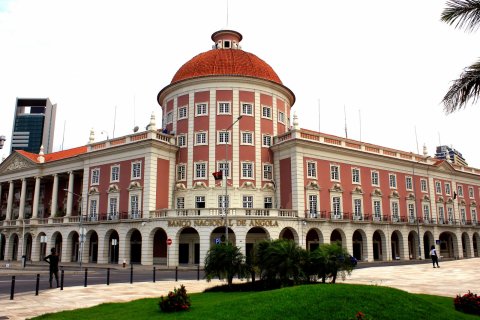"The decision to change the outlook to Stable reflects our expectation of a slower pace of fiscal consolidation than previously anticipated, with the risk of a deterioration in the peso and debt service driven by the depreciation of the kwanza remaining high", analysts write in the note released on Friday night.
In announcing the decision, Moody's writes that the rating level remains at B3, below the investment recommendation line, in a context in which Angola is expected to continue to record slight budget deficits in the coming years, despite stronger growth of Gross Domestic Product in the short term, and favorable conditions in the oil sector.
"The debt-to-GDP ratio is expected to stabilize at a higher level than expected, slightly below 60 percent of GDP, still much lower than at the end of 2020, when Angola's rating was Caa1", writes Moody's, adding that "improvements in external vulnerability are also more limited than anticipated, with currency volatility remaining high."
The degradation of the outlook for Angola means that Moody's does not expect to raise or lower Angola's rating over the next 12 to 18 months, in a context in which debt refinancing risks have fallen, but the Government continues to face a of challenging debt, including significant bilateral debt payments, so taken together this scenario shows that "risks are balanced for the B3 rating level".
The maintenance of the opinion on the quality of Angola's sovereign credit "reflects the poorly diversified economy, despite efforts to improve reforms and the business environment in recent years, and the significant dependence on the oil sector for both tax revenues and export revenues", adds Moody's, also highlighting the weak institutional framework and the vulnerability of public debt to the volatility of exchange and interest rates.
In terms of macroeconomic indicators, Moody's predicts that Angola will grow 3 percent this year and 3.3 percent in 2025, accelerating from the 1 percent recorded in 2023, and that public debt will be close to 60 percent of GDP until 2026.
The Government will run a primary budget deficit of around 2.8 percent between 2024 and 2026, down from 7 percent previously estimated, and revenues measured as a percentage of GDP will also decline.
Moody's predicts that oil production will remain at current levels of 1.1 million barrels per day, but prices are expected to fall compared to 2023 values, which influences revenue for the State's coffers.
"We foresee a more gradual decline in the debt burden; from 2025 onwards the debt-to-GDP ratio will remain only marginally below 60 percent, higher than our previous forecast of around 40 percent", conclude the Moody's analysts.







